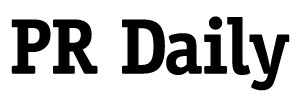Insights from CNBC’s Salvador Rodriguez on what makes a tech story stand out
Stand out from the crowd.

Amanda Coffee is CEO of Coffee Communications and ex-Under Armour, PayPal and eBay.
Salvador Rodriguez is CNBC’s deputy tech editor based in San Francisco. He previously covered Meta and social media companies for CNBC and The Wall Street Journal and was a tech reporter for Reuters, Inc. Magazine and the Los Angeles Times.
Rodriguez is known for identifying emerging tech trends and building sources to break scoops. When I was at PayPal, he covered DEI before it became a hot topic in tech, reporting on returnship programs for women with career gaps in Inc. Magazine and International Business Times.
As technology evolves rapidly, CNBC remains at the forefront of industry coverage, from AI’s impact on business and labor to regulatory shifts under a new administration. Based near Silicon Valley, Rodriguez leads a team covering major tech companies, frequently breaking market-moving news on acquisitions, layoffs and CEO appointments. This month marks the 10 year anniversary of CNBC’s San Francisco bureau focused on tech coverage.
In this Q&A, we discuss key topics shaping 2025’s tech landscape—robotaxis, AI’s role in job markets, and the art of crafting compelling tech PR pitches for CNBC.
What tech topics are receiving the most clicks and views right now?
AI was the big story last year, and it continues to be the story today with how it is affecting every business, the labor market, including software engineers, and how they’re adapting. At the same time, investors want to know: is the technology profitable while it continues to accelerate and innovations continue to happen?
Also, the impact of a new administration in Washington – it touches the tech industry in a number of ways, such as tariffs. How does that impact hardware, including the hardware necessary for AI? And also from a regulatory standpoint, how will the new administration impact things like the pursuit of antitrust cases or the M&A market – is that going to open up again?
There’s also a lot happening that my reporters and I are interested in, including the robotaxi market. When people come to San Francisco, it’s almost like a tourist attraction because it’s such an innovative and tangible piece of technology that really captures people’s minds.
What’s a recent PR pitch that was an immediate yes and why?
Now that I’m an editor, I’m not getting pitched as often, but I think what captures my attention is when it’s not so much a pitch, but rather someone interested in building a relationship.
The people who stand out are the ones who ask to meet up in person, especially in this age of AI. That makes it much easier to learn more about what they are looking for and they get a better sense of how I’m thinking about CNBC’s tech coverage. Once we establish those relationships, and I feel like I can trust them, they are on my radar. So, when they email me a pitch, I can’t guarantee that I’m going to take it, but if it’s someone I know, I will give the pitch my full attention.
Any tips for PR leads trying to secure coverage for tech firms or clients on CNBC?
Having a good relationship with me and our reporters, that’s the first thing. I think that’s more valuable than a good subject line or a very optimized email.
Our audience is thinking, “what do I buy or sell?” so providing information beyond the press releases and coming to us with exclusives always helps. We want to give our readers something they can’t get anywhere else. That can be done several ways, either by talking with executives or getting an exclusive on a new product or new strategy.
If your email pitch is a bunch of company speak or legalese, that’s a bad start. If your company is interested in participating in our coverage, but isn’t nimble enough to work quickly under deadline, many reporters, and the news cycle, don’t have time for that.
Many PR pros only interact with writers and not editors. What do you wish they knew about an editor’s role in the newsroom?
As someone who recently graduated from reporting to editing, I think it is also on the editors to make an effort to interact with PR people and be part of the environment. I am always scheduling dinners and coffees with people because I still like being involved. I like going to my reporters with tips or ideas on people they should talk to.
An important thing for PR people to understand is that from the editor’s perspective, we’re looking from a macro vantage point. My reporters can be zeroed in on a specific company because that’s what they should be doing, whereas I have a bigger lay of the land and a better understanding for the themes that stick out to our readers. Taking the time to chat with us and get a better sense of themes is good when it’s time to pitch reporters and get a sense of what stories could resonate at a certain point in time.
You’re great at sharing your team stories on social media. What’s the story you worked on that generated the most conversation online?
I’m very proud of a recent piece by Jennifer Elias, in which she reported on the Google CEO responding to questions about using AI to cheat in job interviews for software developers.
While the story was about tech companies dealing with the fallout of AI when it comes to their own labor market, Jenn took that nugget that many would have missed, and blew it up to encapsulate more than Google, and discovered that this is a problem affecting the entire tech industry.
In fact, from some people’s perspectives, notably coders themselves, this is not a problem. This is the future, and the tech industry needs to adapt. Jenn ran with that and found the companies responsible for developing the tools allowing coders to cheat in their interviews with AI – she had color from inside of Google and found an entrepreneur at a startup who was able to give her a good perspective of how he was dealing with it as a business leader.
Then came the chatter around the internet from social media comments, to newsletters, to LinkedIn posts. It was not only well reported, but a very well written story that by the time you got to the end, you were wondering if the 21-year-old who built this cheating tool might have been using his own tool during the interview with our reporter. I thought it was a great way to get into this influx of AI and how it’s impacting the tech industry itself.
What interview with a tech CEO was the most helpful for your reporting and what made for a standout interview?
I have two that stand out, but both were off-the-record chats with CEOs who took the time to come into the office and have very frank conversations about their companies and the tech industry at large. When we talk with CEOs on the record, a lot of it is posturing and you’re getting media-trained responses. So, talking behind the scenes and having a more sincere conversation can be really helpful. As we come out of those meetings, we can look for other stories that are ultimately authentic to what’s really happening in the tech industry. I think CEOs who aren’t afraid of having those kinds of meetings with reporters are some of the most effective mediums for communicating what they are seeing.
What topics are you trying to cover more in 2025?
I am very interested in how AI is changing society and people’s lives, beyond just the business models. If we look at how this is changing our lives day to day, that, in some ways, is more revealing and a better signal for the impact it will have on the business landscape.
About a year ago, I was in an Uber in San Francisco, and the driver pulled up next to a Waymo with no driver in it, and I could see on that Uber driver’s face this expression of him understanding that the future probably wouldn’t include him in that kind of role. So, I think stories demonstrating those kinds of developments are very interesting right now. Eventually, we’re also going to get to robots, especially as you combine them with the intelligence of where AI is at this point.
I’m also interested in seeing what happens in the tech industry as the executives look for ways to further reduce costs and continue to lay off their workforce – a workforce that’s not accustomed to it. When I talk to the workers about their tech leaders, they disagree with what they are doing and are not sympathetic when things don’t go their way, like what’s happening with tech stocks being down to the levels they are now from around the 2024 election. So, it seems as though tech executives and tech workers are more at odds than perhaps in the last couple of years.






